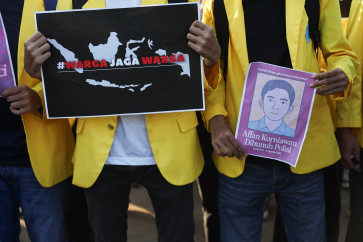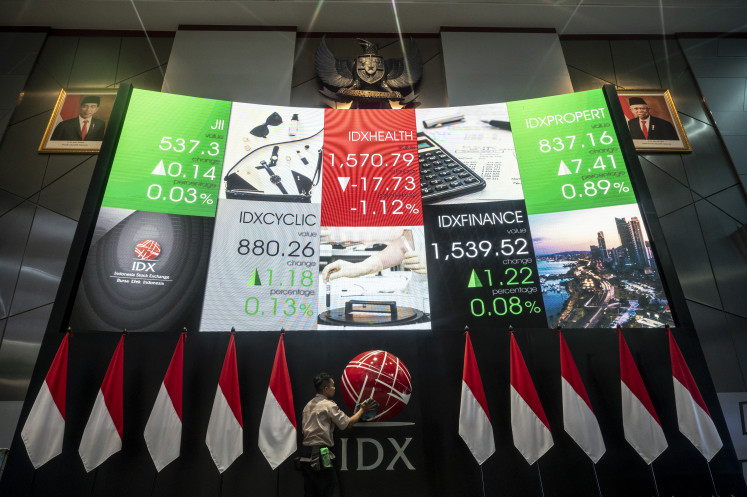Popular Reads
Top Results
Can't find what you're looking for?
View all search resultsPopular Reads
Top Results
Can't find what you're looking for?
View all search resultsArts community remembers Raden Saleh in Bogor
A large group of painters, artists, cultural observers and critics paid a visit on Monday to the grave of Raden Saleh in Bondongan subdistrict, Bogor, and demanded the government bestow the world-renowned painter with the countryâs highest title of national hero
Change text size
Gift Premium Articles
to Anyone
A
large group of painters, artists, cultural observers and critics paid a visit on Monday to the grave of Raden Saleh in Bondongan subdistrict, Bogor, and demanded the government bestow the world-renowned painter with the country's highest title of national hero.
In its petition, the community also proposed that the central government name April 23, the day of Raden Saleh's passing, as National Fine Arts Day.
Among the attendees was former education minister Wardiman Djojonegoro.
Jakarta painter Odji Lirungan said the monument of Raden Saleh, where the grave is situated, should be established as an arts center where artists and the public could involve themselves in art talks or display artwork.
'His name and work are recognized internationally, but the grave is so simple. Worse, most people don't know that the maestro is buried here in Bogor.
'To name someone a hero doesn't mean the person had to take part in the independence war. Raden Saleh was awarded by European kings during his time for his dedication to the arts, while we haven't given him any honour,' he said.
He suggested the Bogor administration acquire the land in the vicinity of the monument to realize the idea.
Born into a aristocratic family in Semarang, Central Java, in 1807, Raden Saleh Sjarif Boestaman enjoyed education in the Netherlands and Germany.
He was later known as a pioneer of Indonesian modern art and introduced the country and its history through his paintings.
As a painter, he also stayed in France, Austria and Italy before returning to Jakarta. He died in 1880 in Bogor.
The organizer of the event, Dayan Layuk Allo, said the tomb of Raden Saleh was found in 1923.
The epitaph read that Raden Saleh was a painter for the Dutch government.
Thirty-years later, then president Sukarno ordered architect Friedrich Silaban to restore the tomb to a monument with Indonesian characteristics.
Dayan said some of attendees also came as pilgrims retracing the work of Silaban to commemorate 100 years of the architect.
Raden Saleh's work included the likes of the Istiqlal Grand Mosque and the head office of Bank Indonesia.










